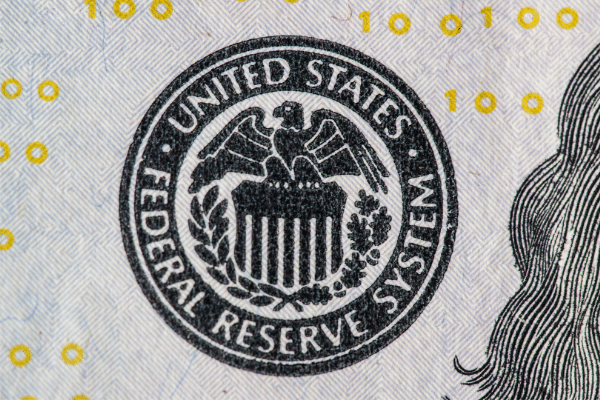
The centrally planned economy proved effective in only one thing, the destruction, and degradation of society, the economy, and the body politic. So what makes central banks think that issuing their own cryptocurrency can become a financial panacea?
Sergei Popov was late yet again. The twelve-year-old boy living in the city of Smolensk in Soviet Russia could hear the booming voice of his mother ringing in the back of his head as if someone had smacked him on his ears.
“How many times must I tell you not to be late? Do you want the family to starve?”
Sergei certainly did not want to starve, nor did he want to be responsible for his family’s starvation.
In the mid-1980s, as the Soviet Union’s planned economy started to falter, shortages in even the most basic items, from bread to toilet paper, made coupons and rationing a key component of the Soviet lifestyle.
While footage of the Soviet Union’s infamous bread lines, played out repeatedly like so many late-night erectile dysfunction ads across western media channels, for millions of communist subjects spread out across the Soviet Union’s vast expanse of territory, this was their grim reality.
Hunger was a given.
But it wasn’t abject hunger, it was the sort of hunger that gnaws at your insides, like a general malaise or feeling of lethargy, due to nothing more than the lack of adequate carbohydrates.
And towards the end of the Soviet regime, meat rations were down to once a month, the bread came every five days. Well before the nuclear accident at Chernobyl in Soviet Ukraine, the entire state of communism was in a turmoil and ticking down to its final minutes.
But it wasn’t always that way.
Sergei remembered a time, when he was five or six when food, while not plentiful, was never an issue.
Sure, it wasn’t as if they had chocolate every day (what Sergei wouldn’t give right now just to taste that dark rich elixir of life), but at least he never went to bed hungry.

Never could Sergei imagine that less than a decade later, he’d give his kidney for a slice of bread.
Because while the Soviet Union’s planned economy was able to provide for its people when coupled with robust economic growth, as the inherent fallacies built into many of the assumptions of a centrally worked economy started to show, communist supply chains started to break down.
Without an incentive to produce, excel and innovate and with state-directed innovation towards expensive and ultimately unproductive arms and space programs, local and state party apparatchiks became underbosses, running their districts like the Mob and doling out ration coupons to cronies or selling them on the black market.
And so it became that the very ills of capitalism, which communism and the centrally-planned economy were intended to cure, became baked into the Soviet Union’s economy itself.
Centralize This
Which is why the Chinese central bank’s move to issue its own cryptocurrency must be viewed with some degree of skepticism instead of being mimicked by other central banks.
Following the move by the People’s Bank of China (PBoC) to announce it would be issuing its own cryptocurrency, a slew of other central banks are mulling the same move.
Known as “central bank digital currencies,” these central bankers believe that the growth of stablecoins like Tether are a result of a gap in the market due to the inability of the current financial services system to satisfy the demand for low cost, frictionless cross-border money transfers.
And since legacy financial services and remittance companies, who make fat margins off money transfers have little incentive to adopt digital currency payments systems, one argument (at least as far as the Chinese are concerned), is that central banks should step in to fill that void.
To be sure, the move is not entirely altruistic on the part of central banks.

Commercial banks are the biggest patrons of central banks and central banks have substantial oversight over their commercial counterparts.
Central banks are also able to control the money supply through their influence over commercial banks, who are beholden to central banks for their access to cheap money, which they can then generate profit with, by lending out.
But because stablecoins like Facebook’s Libra are not so similarly hamstrung, central banks will find themselves hard-pressed to reign in their digital counterparts, particularly in the case of stablecoins like Tether, which always manage to stay one step beyond jurisdictional reach.
If You Can’t Beat Them, Try Using A Gun
Which is why central banks may feel pressured or compelled to step in and issue their own cryptocurrencies.
One argument that central banks issue their own cryptocurrencies is that it would allow them to apply negative interest rates very broadly when needed and supply the market directly with an unlimited supply of safe assets.
But yet there are strong reasons why central banks may not be the best placed to deal with retail services through the direct issuance of their own cryptocurrencies and instead, focus on wholesale transactions with institutions which they license and control.
Because if central banks issue their own cryptocurrencies, commercial banks may find it hard to attract deposits and as a consequence, undermine their ability to make loans.

A lack of loan activity may put pressure on central banks to enter the lending market directly themselves to compensate, with the myriad conflicts of interest, pitfalls, and potential for corruption that could entail.
A central bank that is the cheapest provider of both retail payments and loans would be more centralized than ever and more closely resemble a hegemonic state bank — hardly the progress that was envisioned by Bitcoin’s decentralized narrative.
Then there’s the issue of central banks being ill-equipped to enter the retail market, to begin with — they are simply not built to manage the myriad responsibilities that come with being a retail bank — from anti-money laundering checks to “know your customer” requirements, central banks would buckle at the need to now handle anything from customer inquiries to complaints.
Anyone who’s ever been to the Department of Motor Vehicles will know that government bureaucracy is ill-suited for customer service.
Then there’s the issue of privacy.
There is already increasing concern that the PBoC’s cryptocurrency will allow Beijing to track who is spending what and how.
Yet central banks cannot also guarantee that transactions using their issued cryptocurrency would be private because that could potentially make the government itself complicit in money laundering.
Same Day, Different Dollar
Perhaps then, instead of rushing to compete with the likes of Facebook, Tether, WeChat or ban them outright, central banks would be better off issuing their own cryptocurrency through the existing banking system first, before issuing them directly to the retail market.
For instance, a central bank-issued cryptocurrency has the potential to reduce friction as well as the number of counterparties when it comes to cross-border money transfers — the ability to do that, in and of itself would give cryptocurrencies a run for their money (no pun intended).
On July 23, Philippines Stock Exchange-listed Union Bank of the Philippines (UBoP) successfully piloted blockchain-based remittances from Singapore (where many overseas Filipino workers are based) to the Philippines in partnership with Oversea-Chinese Banking Corporation (OCBC) using Adhara, liquidity management, and international payments platform.
Speaking to The Edge Singapore, Justo Ortiz, Chairman of UBoP said,
“It’s a fraction of the cost of remittance because it’s digital all the way.”
“Now, rural banks (and their customers) can deal on the blockchain in a trusted, immutable manner.”
But the pilot project was no panacea and one of the main issues with the pilot between OCBC and UBoP was the bilateral nature of the transaction.
OCBC creates its own token, Adhara mints the OCBC token and passes it to UBoP and according to UBoP’s Ortiz,
“We burn the token and pass it on to Cantilan Bank (a rural bank in the Philippines).”
But Ortiz concedes the limited scope and applicability of the pilot,
“We cannot have a series of bilateral transactions across the globe where all the banks have their own tokens because it will be confusing.”
“The end goal is to achieve the same universaility that exists with the U.S. dollar or euro.”
Ironically, peer-to-peer, or bilateral transactions are the very backbone of cryptocurrencies, the system of a singular coin or currency that Ortiz is suggesting would more closely resemble a central bank-issued cryptocurrency.
Ortiz argues that if global central banks were to issue a central bank-backed token so that all banks could use the token to transfer value, the need to maintain multiple bilateral accounts such as in the case of the UBop and OCBC pilot would be eliminated.

Ortiz suggests that this could be attempted on the regional level, for instance with the European Central Bank for the European Union and the Monetary Authority of Singapore for a regional ASEAN token (the Association of Southeast Asian Nations).
At the very least, a central bank-issued cryptocurrency would help to eliminate some of the middlemen who currently clog the global remittance systems.
Referring to the example of Western Union, a U.S. remittance company, Ortiz notes,
“The (current) remittance (service) goes through, maybe, a bank, a courier service or pawn shop and customers get the cash.”
“It costs a lot of money, around 5% to 10% the value of the remittance.”
In some cases the money being remitted can pass through as many as 14 intermediaries, costing as much as 14% of the value of the amount transferred.
Which is why central bank-issued cryptocurrencies are best suited to solve these sorts of problems and to allow commercial banks to continue to act as an intermediary between central banks and retail customers.
A central bank-issued cryptocurrency isn’t the main issue, who the cryptocurrency is issued to could well be.
You may want to read
You may also want to read:
- Could “Non-Transparent” ETFs Pave The Way For A Cryptocurrency ETF?
- Fungible Funds Court Cryptocurrencies
About the Author: Patrick Tan
CEO of Novum Global Technologies, a cryptocurrency quantitative trading firm. Trading up to 100,000 times a day the way only an algorithm could.
Remark: This article first appeared on Altcoin Magazine and is hereby republished with permission by SuperCryptoNews .


